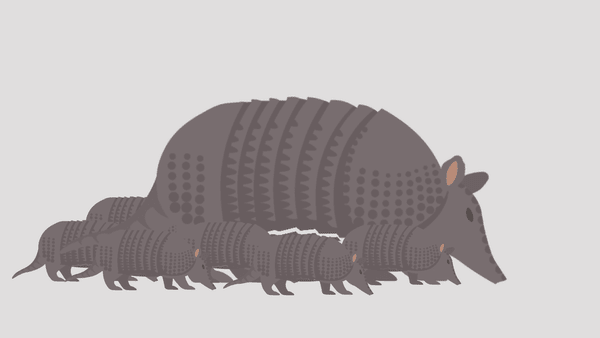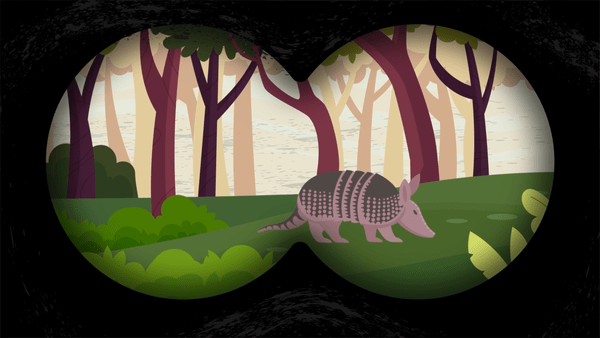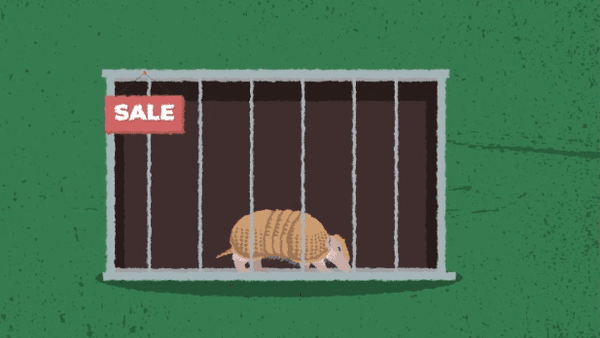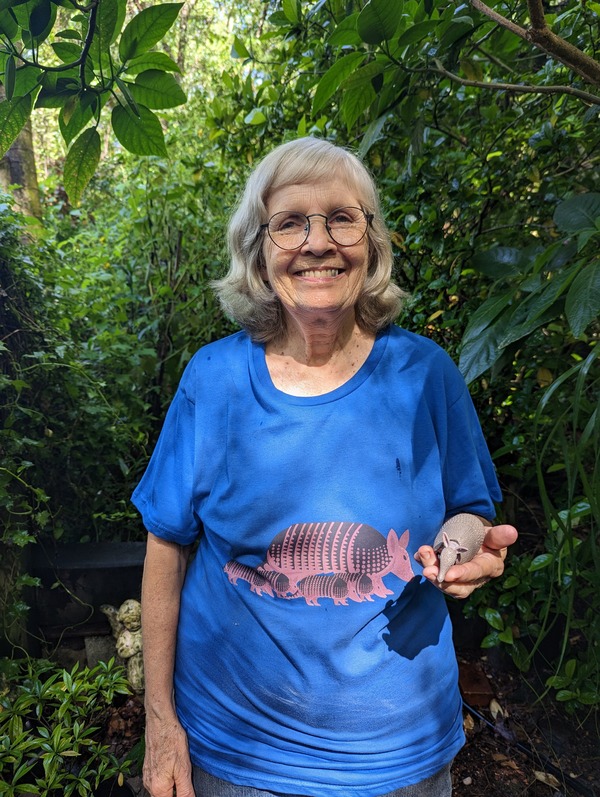
Seven-banded armadillo
Dasypus septemcinctus
Reproduction: Six to twelve young per litter are born in underground burrows; they are probably monozygotic – meaning genetically identical! The young are born between October and December. The offspring remain in the burrow until they are weaned at around 2 months of age.
Weight: 2 kg
Diet: Ants, termites, beetles and sometimes vertebrates, such as young mice, amphibians, and reptiles.

Common Names
English – Seven-Banded Armadillo; Southern or Brazilian Lesser Long-Nosed Armadillo
Spanish – Mulita, Mulita Pampeana, Tatú Mulita, Tatú de Siete Bandas
German – Siebenbinden-Gürteltier
French – Tatou à Sept Bandes
Portuguese -Tatu-Mirim, Tatuíra
How to Identify:
Carapace Grey Moveable bands 6-7 Tail 12-19 cm Other characteristics Proportionally large ears, of up to 3.8 cm Similar in appearance to other long-nosed armadillos, such as D. sabanicola and D. mazzai
IUCN Red List
Species are classified into one of nine Red List Categories: Extinct, Extinct in the Wild, Critically Endangered, Endangered, Vulnerable, Near Threatened, Least Concern, Data Deficient and Not Evaluated. Vulnerable, Endangered and Critically Endangered species are considered to be threatened with extinction.

Seven-banded armadillo Facts
- Its Spanish name, “mulita” (=small mule), refers to its proportionally large, mule-like ears.
- It is one of the few mammal species that always gives birth to at least 6 offspring despite having only 4 mammary glands.
- Builds nests inside its burrow, for which it gathers leaves and grass under its belly, holds it with its front legs, and hops backwards towards the burrow entrance.
- More than half of its diet consists of ants – it’s a natural biological control agent!
- One of the few diurnal (active during the day) armadillo species
Habitat
• Savanna
• Shrubland
• Grassland
• Desert
 Population Trend
Population Trend
• Decreasing
 Threats
Threats
• Habitat loss
• Hunted
• Dogs
• Road accidents
Here are some ways YOU can help keep armadillos healthy and safe:
– It is best to observe them from a distance and in silence.
– Our pets could attack them. It is important to keep your dog on a leash when you go for a walk, or keep your pets at home in an enclosed and safe area. In addition, taking care of our pets also means spaying and neutering them so that they do not breed without control.
– Another way to help protect the areas where armadillos live is by not starting fires.
– Armadillos love to live in nature, keeping them as pets is not good for them. Keep in mind that they don’t like selfies either.
– If you find an injured armadillo, contact a wildlife hospital so they can help it.
– Deforestation is often caused to make more land for livestock. Eating less meat may help save our forests.
Test your new knowledge!
Test your new armadillo expertise by visiting our armadillo word search, puzzles, coloring sheets and name games!
Check out this video to see how much you have learned!
The Anteater, Sloth, Armadillo Specialist Group has a store that directly helps xenarthran conservation!


 Population Trend
Population Trend Threats
Threats













